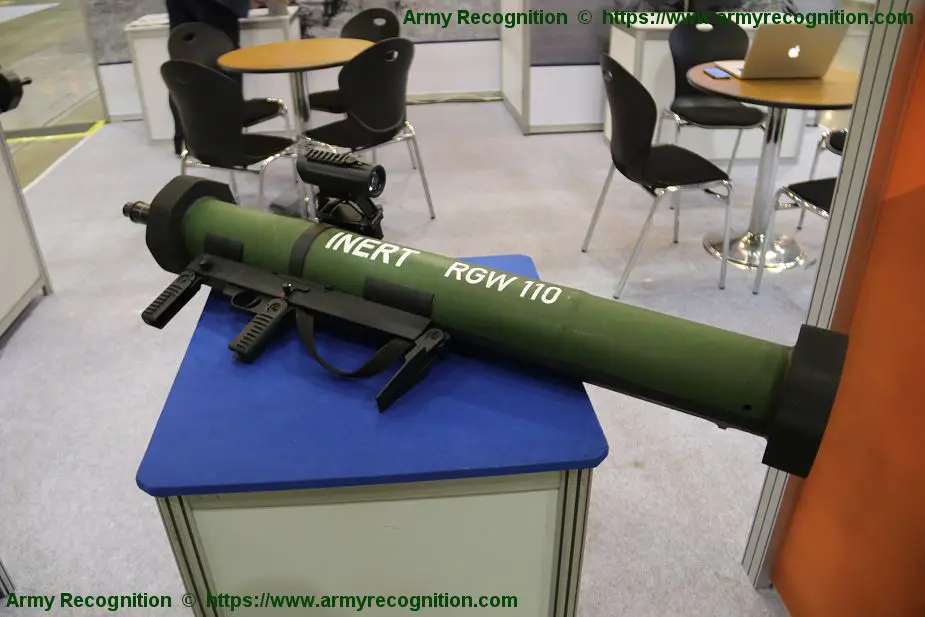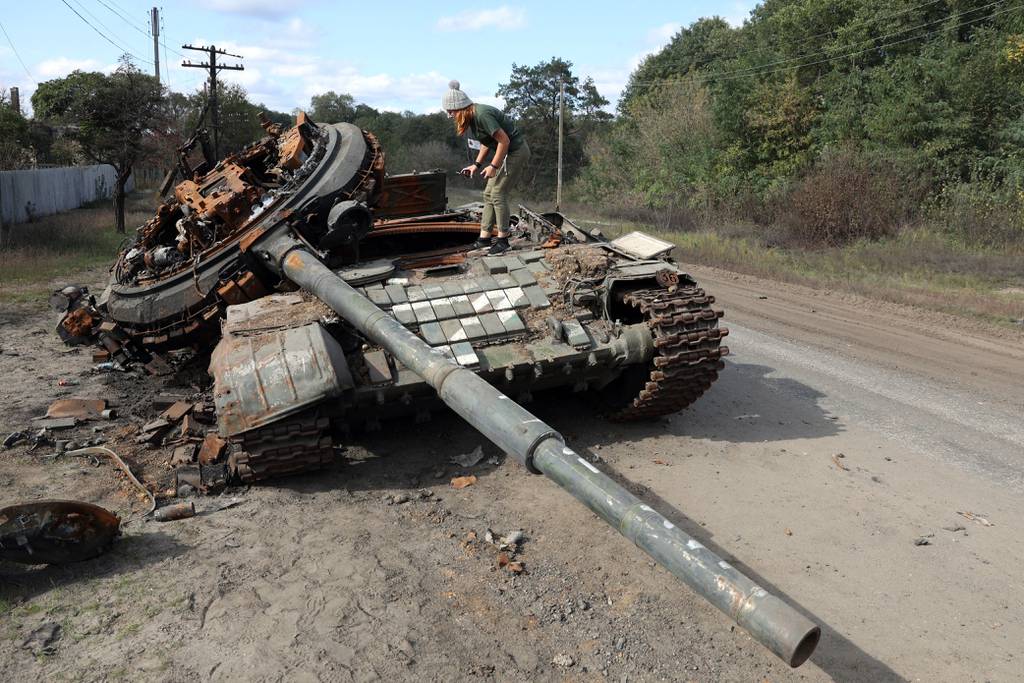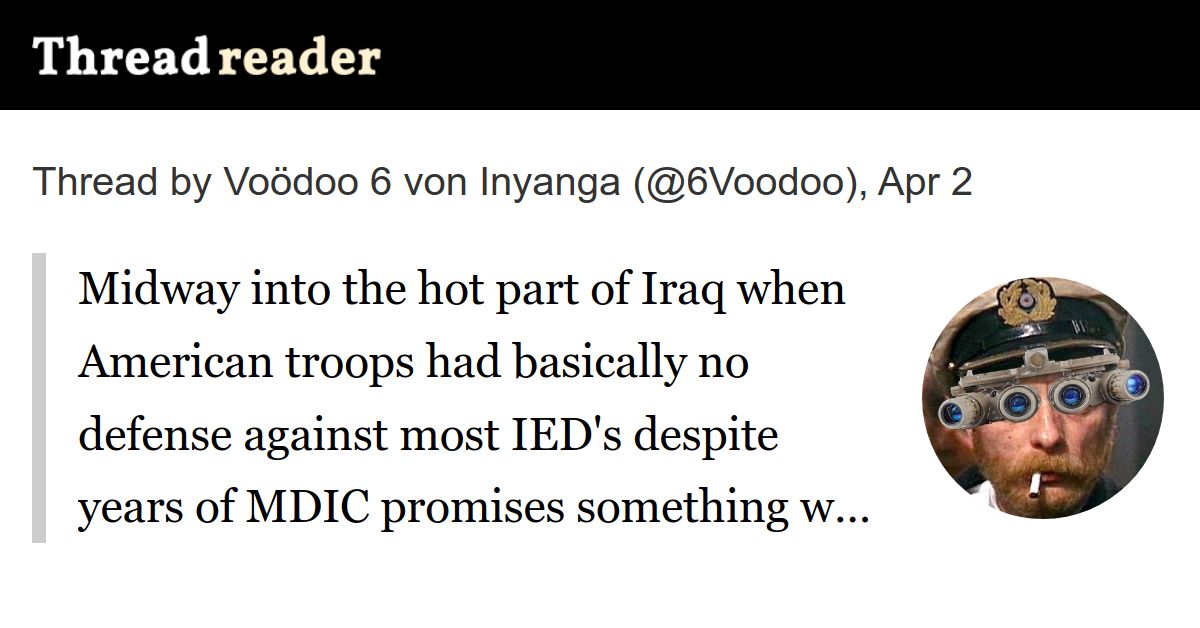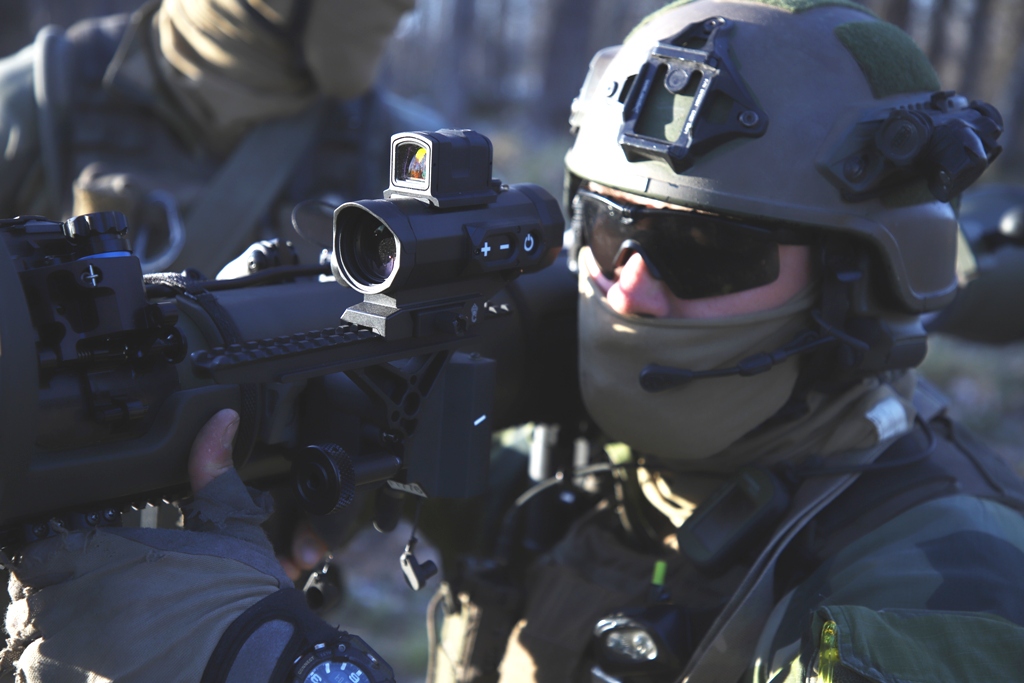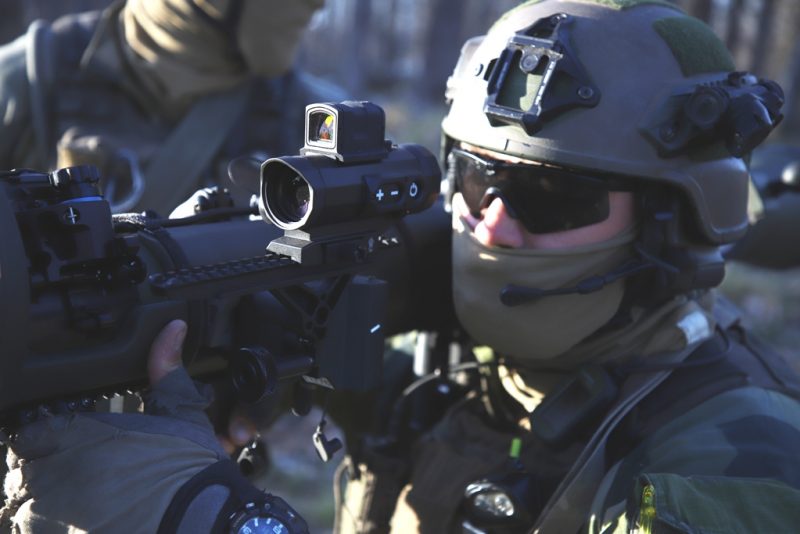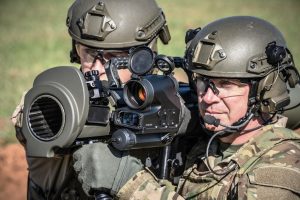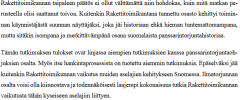Carl-Gustaf M4: smart sights for a smart weapon
13/05/2022
Paolo Valpolini
When the Carl-Gustaf M4 was introduced in 2014 it wasclear that in perspective the advantages of the fourth generation weapon wouldbe much more than weight reduction, the embedded wired communication allowingto adopt new types of sights and ammunition with the aim of improving accuracyand terminal effects.
The time has come, and at the Ground CombatDemonstration 2022 Saab presented different solution in terms of aimingdevices, one from the company itself and two from partner companies.

click on image to enlarge
Until now customers could opt for the weapon beingfitted with iron sights or red dot sight, the aiming device that ensured longerrange capabilities being the Saab 557B. This has a x3 magnification and a 12°Field of View, and is fitted to a V-slide assembly mounted on the front-left ofthe weapon. A range setting knob slides in and out to select the properammunition indicator ring for various rounds and rotates to adjust for range,the azimuth drum being used for azimuth adjustments during bore sighting, whilethe elevation drum is used for elevation adjustments during bore sighting andtemperature adjustments, as well as during firing, maximum elevation rangebeing 1,000 meters. The 557B is 250 mm long and weighs 0.9 kg. The range drumfeatures four preset ammunition settings, while two luminous grooves form a Von the bottom left-hand side of the assembly to determine the weapon’s properelevation when firing illumination rounds. The 557B cannot be fitted with nightvision devices.
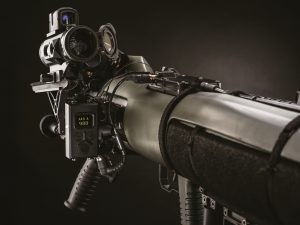
click on image to enlarge
At the 2022 Kvarn/Karlskoga event Saab introduced thenew Fire Control Device 558, FCD 558 in short, which considerably reduces theoperator workload, the gunner having to deal with numerous variables that mightbe difficult to manage under the stress of a firefight. It features a betteroptic, a Hensoldt x3, but more important it has in its electronic memory allballistic tables of existing Carl-Gustaf rounds. Distance is input by clicks,based on an estimate or an external laser rangefinder measurement, while airtemperature and barometric pressure are kept into consideration when computingthe ballistic equation. When the HE 448 round is used, thanks to the weaponcommunication system using the Firebolt protocol it is detected by the FCD 558and also communicates the propellant temperature, a key element to improveaccuracy. The FCD 558 moves the red dot according to the abovementionedcorrections, the gunner having then only to put the dot on the target andsqueeze the trigger. Thanks to the long Picatinny rail, it can be fitted withclip-on night vision devices, a solution seen at Kvarn being coupled to a TheonThermís thermal sight. The FCD 558 weighs 1.2 kg with two AA batteries; it isready for production and will be introduced as the standard sight in fall 2022.The system has already bagged a launch customer, the Swedish Army, which inDecember 2021 has ordered an undisclosed number of such sights in combinationwith HE 448 ammunition.
Two partner companies developed evolved sights thatcan be used by the Carl-Gustaf M4 to further improve its capabilities. Bothfeature a laser rangefinder and allow to evaluate the target angular velocity,in order to engage moving targets with a high probability of kill (Pk),and both can obviously exploit the M4 communication architecture that allows tolink the three main elements, weapon, sight and ammunition, through theFirebolt protocol. Currently only one Carl-Gustaf round can communicate throughthe Firebolt, hence when using legacy rounds the soldier must insert manually,through the sight menu, the type of round that has been loaded in order toallow the system to choose the relevant ballistic table.
click on image to enlarge
In alphabetic order, Aimpoint developedits FCS13RE fire control system for use on multiple weapon platforms, andworked closely with Saab for its adaptation to the Carl-Gustaf weapon system.It consists of a x1 magnification, parallax free optical channel direct viewoptic with unlimited eye relief, allowing to aim with both eyes open and facilitatingtransition between different targets, of a ballistic computer with thecapability to store more than 50 different ballistic tables, and of an eye safe1,550 nm Laser Range Finder (LRF) with a ranging distance of 20 to 4,000meters, which the company underlines being able also ranging against snow thathas only a 2-3% reflection and is therefore a difficult surface to cope with.The LRF provides the distance to target, which is fed into the computer, andwith standard Carl-Gustaf 84 mm rounds the latter also takes in count airtemperature and pressure data provided by external sensors, which must beimported manually. When firing on static targets the system automaticallycompensates for the ballistic drop, the operator needing only to put the reddot on the target and squeeze the trigger. However built-in inclinometers andgyroscope allow firing on moving targets with utmost accuracy, the FCS13REhaving shown a 90% hit probability at 500 meters range on targets moving at 30km/h. Here the operator aims at the target, follows it while activating the LRFreleasing the rangefinder pushbutton when an icon shows the target has beenacquired; he then puts the red dot on the target, the FCS compensating for boththe ballistic drop and the lead angle. A x3 add-on viewer can be fitted to theFCS13RE to improve sighting at great distance. The Aimpoint sight is compatiblewith all types of helmet-mounted night vision goggles, 16 different lightintensity levels being available, seven of which NVG-compatible, Aimpoint alsoproviding a clip-on thermal imager known as TH-60 based on an uncooled sensorproviding detection, recognition and identification ranges against a vehicletarget of respectively 4,000, 1,000 and 600 meters.
The FCS13RE is fully available, it weighs 1.82 kg withAA batteries, and fitted with the Carl-Gustaf bracket. It can be used on allgenerations of Carl-Gustaf although it is fully exploited with the M4 version,especially when using the HE 488 round that automatically provides thepropellant temperature.
The US Army is definitely one of the main users of theFCS13, and Aimpoint understood the service being willing to get a newgeneration sight that might further reduce workload and engagement time. Ittherefore launched a programme for the successor of the FCS13RE, the FCS14being currently in an advanced stage of development. The new sight is able toautomatically import all data as it has embedded sensors for temperature andpressure. Its weight with the DSA thermal/day add-on will be around the same ofthe FCS13RE without night attachment, the direct view sight only weighingaround 1.5 kg. The FCS14 maintains the direct view optic, which is typical ofAimpoint, and is fitted with a high definition display while the legacy sighthad a red-dot matrix. For the time being the display is used to move the reddot according to the ballistic equation results, however Aimpoint added it inview of future options to be added in a more networked environment, The sameapplies to the increased connectivity, the FCS14 being able to receive as wellas to send target data to other units through soldiers’ network, such as theATAK app or other systems. The DSA clip-on includes a thermal and a day digitalchannel, and is designed for one-hand operations. As said initially, Aimpointconsiders the direct view optic the better solution, as the human eye isdefinitely superior to any other type of sensor, especially at day. At night,soldiers can look either through their helmet-mounted NVGs, as the US Army doeswith success with the FCS13, or use the DSA, both channels featuring anelectronic zoom with x4 and x8 magnification, the system allowing to show theimage on a remote screen. The FCS14 is fitted with a digital compass and a GNSSreceiver (not M code), which together with the LRF allow it to pick-up thegrids of a target to be distributed on the network to other effectors, WiFi andBluetooth links being offered as option. Should the sight receive target gridsfrom an external source, the target will appear as a dot while a diamond willshow up on the display, and to get the sight on target the operator must bringthe dot inside the diamond, this procedure having already been demonstrated.The company kept the human machine interface as similar as possible to that of theformer sight in order to reduce re-training time, the menu tree being thereforevery similar. The item seen at Kvarn was not indicative, as it was one of thevery first prototypes, still with an aluminium case while the final version hasa polymer case, lighter and tougher. The latest versions have already beingprovided to selected potential customers to get early feedback before freezingthe configuration.
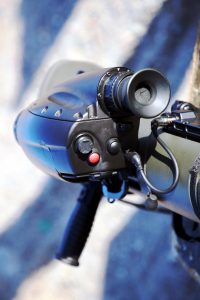
click on image to enlarge
Senop of Finland, part of the Patria group, developedin close cooperation with Saab Dynamics the Advanced Fire Control DeviceThermal Imaging (AFCD TI) that is specifically designed to be used with theCarl-Gustaf M4. A lightweight system, around 1.5 kg with batteries, the AFCD TIdevelopment started in 2019 and the system is now in the last developmentstage, pre-production items having already been provided to some NATO nations.The Senop sight includes both a night channel, based on an uncooled 640×480thermal sensor with electronic zoom, and a day channel, with an over 1 MPresolution and also electronic zoom, the standard view having for both channelsa x3 magnification with a 12.5° x 9.4° field of view. The image is provided tothe shooter on an 800×600 colour display, on which the operator can selectedeither day or night view, or a fused imaged from both channels. An LRF with anover 3 km range is also fitted (2 km on NATO target) that provides rangemeasurement with a ± 1 m accuracy, detection, recognition and identificationranges against man-size and vehicle targets being respectively 2,000, 800 and500 meters and 5, 1.8 and 1.2 km. The AFCD IT suite also includes sensorsproviding terrain angle and cant angle, ambient temperature and barometricpressure, as well as a gyroscope that gives the angular rate. The systemcomputer contains all current rounds ballistic tables, and can be easilyupdated with those of new rounds that will be developed. The AFCD IT wasdesigned to be part of the Carl-Gustaf M4 system, therefore it can interfacewith the weapon communication system allowing two-way data exchange between itand the ammunition. The human machine interface includes the power switch, thejoystick, and a separate push-button for the laser rangefinder. The operatorsees in the screen the type of ammunition loaded, the battery charge status, thetarget distance, while the joystick allows to select the view type, thebrightness, etc. Pressing the LRF button starts the targeting process, theoperator following the moving target for around 2 seconds and when the iconstops flickering he releases the pushbutton and the red dot is moved to thecorrect position considering both lead angle and the ballistic drop. The AFCDTI is powered by AA batteries, an external power supply being also considered.
Carl-Gustaf M4 users, which number has already attained the 15 mark, will soon be able to choose among three different options, with different costs and performances, depending on their requirements. It is however clear that as the number of ammunition types capable to communicate via the Firebolt protocol will increase in the coming years, the adoption of smart sights for the nephew of the recoilless gun developed over three-quarter of a century ago will become more and more appealing. And more sights might also appear.
Photos courtesy Aimpoint, Saab, P. Valpolini

